
The Warsaw Ghetto was the largest of the Nazi ghettos during World War II and the Holocaust. It was established in November 1940 by the German authorities within the new General Government territory of occupied Poland. At its height, as many as 460,000 Jews were imprisoned there, in an area of 3.4 km2 (1.3 sq mi), with an average of 9.2 persons per room, barely subsisting on meager food rations. Jews were deported from the Warsaw Ghetto to Nazi concentration camps and mass-killing centers. In the summer of 1942, at least 254,000 ghetto residents were sent to the Treblinka extermination camp during Großaktion Warschau under the guise of "resettlement in the East" over the course of the summer. The ghetto was demolished by the Germans in May 1943 after the Warsaw Ghetto Uprising had temporarily halted the deportations. The total death toll among the prisoners of the ghetto is estimated to be at least 300,000 killed by bullet or gas, combined with 92,000 victims of starvation and related diseases, the Warsaw Ghetto Uprising, and the casualties of the final destruction of the ghetto.

Mordechai Anielewicz was the leader of the Jewish Combat Organization during the Warsaw Ghetto Uprising; the largest Jewish resistance movement during the Second World War. Anielewicz inspired further rebellions in both ghettos and extermination camps with his leadership. His character was engraved as a symbol of courage and sacrifice, and was a major figure of Jewish resistance during the Holocaust.
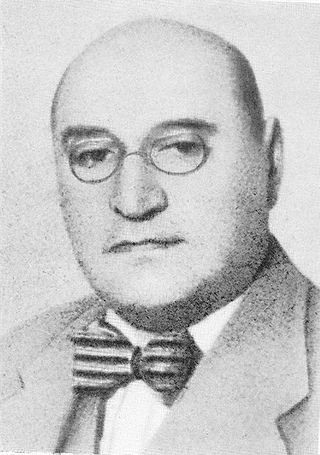
Adam Czerniaków was a Polish engineer and senator who was head of the Warsaw Ghetto Jewish Council (Judenrat) during World War II. He committed suicide on 23 July 1942 by swallowing a cyanide pill, a day after the commencement of mass extermination of Jews known as the Grossaktion Warsaw.

Łosice is a town in eastern Poland, seat of the Łosice County and Gmina Łosice (commune) in the Masovian Voivodeship.

The Jewish Combat Organization was a World War II resistance movement in occupied Poland, which was instrumental in organizing and launching the Warsaw Ghetto Uprising. ŻOB took part in a number of other resistance activities as well.

Tosia Altman was a courier and smuggler for Hashomer Hatzair and the Jewish Combat Organization (ŻOB) during the German occupation of Poland and the Warsaw Ghetto Uprising.

The Warsaw Ghetto Uprising was the 1943 act of Jewish resistance in the Warsaw Ghetto in German-occupied Poland during World War II to oppose Nazi Germany's final effort to transport the remaining ghetto population to the gas chambers of the Majdanek and Treblinka extermination camps.
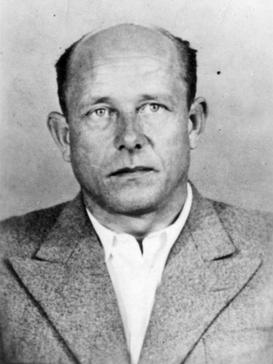
Hermann Julius Höfle, also Hans (or) Hermann Hoefle, was an Austrian-born SS commander and Holocaust perpetrator during the Nazi era. He was deputy to Odilo Globočnik in the Aktion Reinhard program, serving as his main deportation and extermination expert. Arrested in 1961 in connection with these crimes, Höfle died via suicide by hanging in prison before he was tried.

Marek Edelman was a Polish political and social activist and cardiologist. Edelman was the last surviving leader of the Warsaw Ghetto Uprising. Long before his death, he was the last one to stay in the Polish People's Republic despite harassment by the Communist authorities.

Umschlagplatz was the term used during The Holocaust to denote the holding areas adjacent to railway stations in occupied Poland where Jews from ghettos were assembled for deportation to Nazi death camps. The largest collection point was in Warsaw next to the Warsaw Ghetto. In 1942 between 254,000 – 265,000 Jews passed through the Warsaw Umschlagplatz on their way to the Treblinka extermination camp during Operation Reinhard, the deadliest phase of the Holocaust in Poland. Often those awaiting the arrival of Holocaust trains, were held at the Umschlagplatz overnight. Other examples of Umschlagplatz include the one at Radogoszcz station - adjacent to the Łódź Ghetto - where people were sent to Chełmno extermination camp and Auschwitz.

Muranów is a neighbourhood in the districts of Śródmieście (Downtown) and Wola in central Warsaw, the capital of Poland. It was founded in the 17th century. The name is derived from the palace belonging to Simone Giuseppe Belotti, a Venetian architect, who originally came to Warsaw from the island of Murano. It is the northernmost neighbourhood of the downtown area.

Calel (Calek) Perechodnik was a diarist who joined the Jewish Ghetto Police in the Otwock Ghetto during the Nazi German occupation of Poland. His wartime diaries were published posthumously as Am I a Murderer? in 1995 by the Karta Centre of Warsaw.
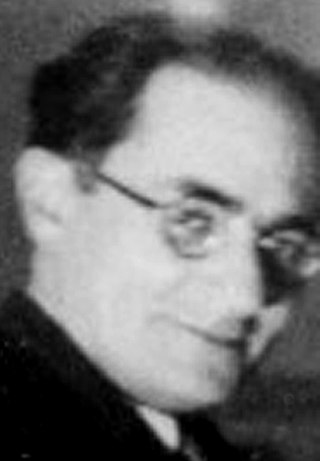
Abraham Gancwajch (1902–1943) was a prominent Nazi collaborator in the Warsaw Ghetto during the World War II occupation of Poland, and a Jewish kingpin of the ghetto underworld. Opinions about his ghetto activities are controversial, though modern research concludes unanimously that he was an informer and collaborator motivated chiefly by personal interest.

The Grossaktion Warsaw was the Nazi code name for the deportation and mass murder of Jews from the Warsaw Ghetto during the summer of 1942, beginning on 22 July. During the Grossaktion, Jews were terrorized in daily round-ups, marched through the ghetto, and assembled at the Umschlagplatz station square for what was called in the Nazi euphemistic jargon "resettlement to the East". From there, they were sent aboard overcrowded Holocaust trains to the extermination camp in Treblinka.
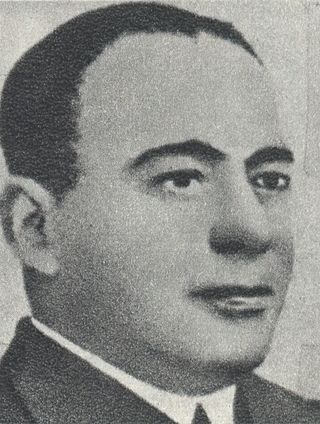
Maurycy Orzech was a Polish economist, journalist, politician and a leader of the Jewish Bund in interwar Poland. He was one of the commanders of the Bund during the Warsaw Ghetto Uprising.

The Radom Ghetto was a Nazi ghetto set up in March 1941 in the city of Radom during the Nazi occupation of Poland, for the purpose of persecution and exploitation of Polish Jews. It was closed off from the outside officially in April 1941. A year and a half later, the liquidation of the ghetto began in August 1942, and ended in July 1944, with approximately 30,000–32,000 victims deported aboard Holocaust trains to their deaths at the Treblinka extermination camp.

Józef Andrzej Szeryński was a police-colonel in interwar Poland, inspector for the Lublin district and later – in German-occupied Poland during the Second World War – the commander of the Jewish Ghetto Police in the Warsaw Ghetto. Szeryński was viewed as a collaborator and traitor by the Jewish underground in the Warsaw Ghetto. The chairman of the Warsaw Ghetto's Jewish Council Adam Czerniaków selected Szeryński to create the Jewish Ghetto Police in 1940. Szeryński was arrested by the German Gestapo on May 1, 1942, for smuggling furs out of the Warsaw Ghetto for personal gain. He was released on the condition of leading the deportation action to Treblinka extermination camp in July 1942. The very next month Jewish underground attempted to assassinate him, unsuccessfully. He remained at the helm of the Ghetto Police until the end of the Grossaktion Warsaw which claimed the lives of over 254,000 ghetto inmates, men, women and children. He committed suicide right after the next wave of deportations in January 1943.
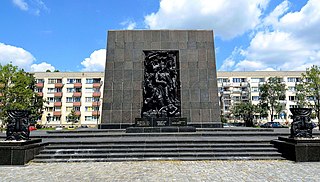
The Monument to the Ghetto Heroes is a monument in Warsaw, Poland, commemorating the Warsaw Ghetto Uprising of 1943 during the Second World War. It is located in the area which was formerly a part of the Warsaw Ghetto, at the spot where the first armed clash of the uprising took place.

Frumka Płotnicka was a Polish resistance fighter during World War II; activist of the Jewish Fighting Organization (ŻOB) and member of the Labour Zionist organization Dror. She was one of the organizers of self-defence in the Warsaw Ghetto, and participant in the military preparations for the Warsaw Ghetto Uprising. Following the liquidation of the Ghetto, Płotnicka relocated to the Dąbrowa Basin in southern Poland. On the advice of Mordechai Anielewicz, Płotnicka organized a local chapter of ŻOB in Będzin with the active participation of Józef and Bolesław Kożuch as well as Cwi (Tzvi) Brandes, and soon thereafter witnessed the murderous liquidation of both Sosnowiec and Będzin Ghettos by the German authorities.
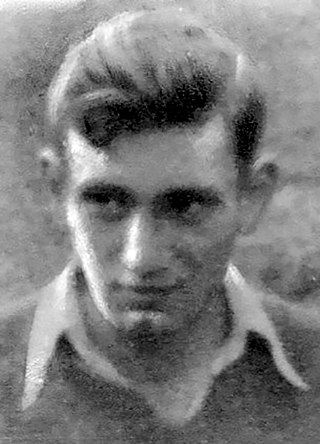
Yitzhak Suknik, frequently known as Koza, was a fighter in the Jewish Fighting Organization. and a member of Hashomer Hatzair. He played a crucial role in the organisation and building of small arms to be used in the Uprising. He took part in the first action of the Warsaw Ghetto Uprising on January 18, 1943, saving the life of Mordechai Anielewicz. During the Uprising in April he was a member of the fighting unit led by Mordechai Growas in the Central Ghetto, and known as an excellent marksman. He died on 8 May 1943 whilst trying to escape to the Aryan side via the sewers.




















